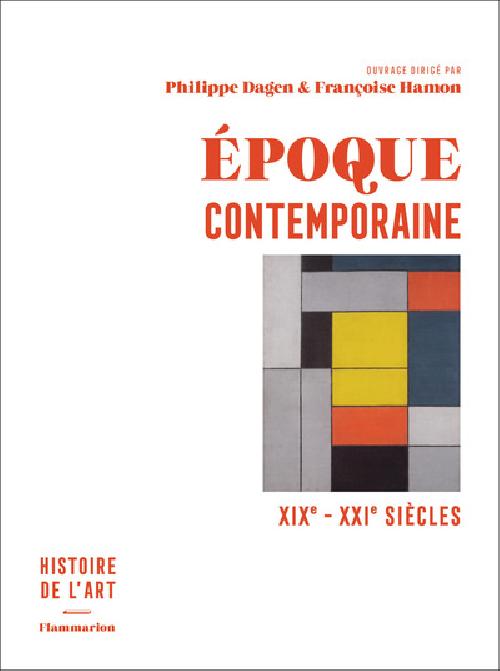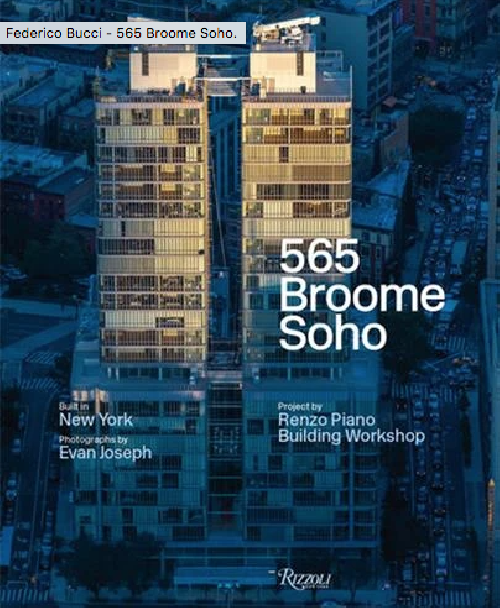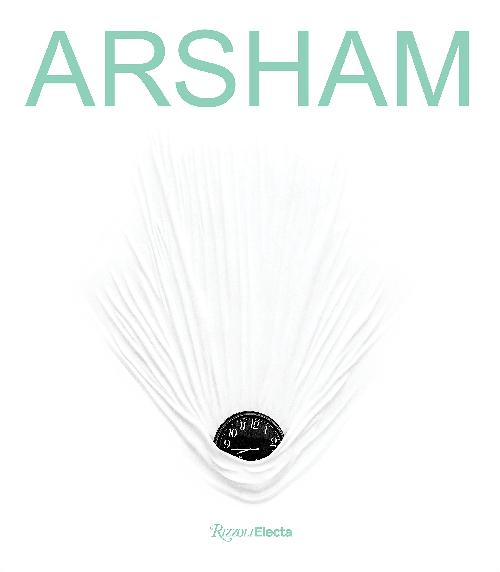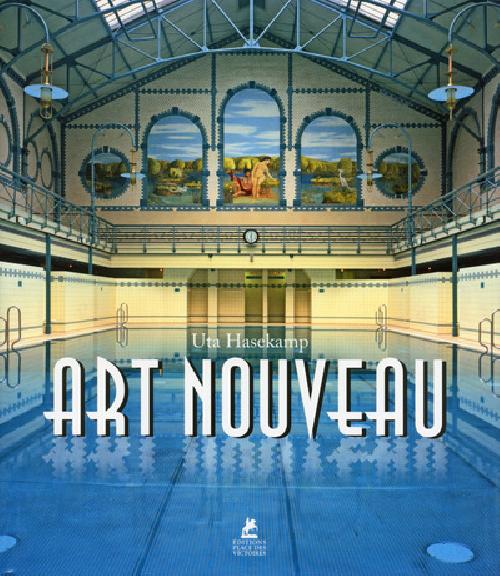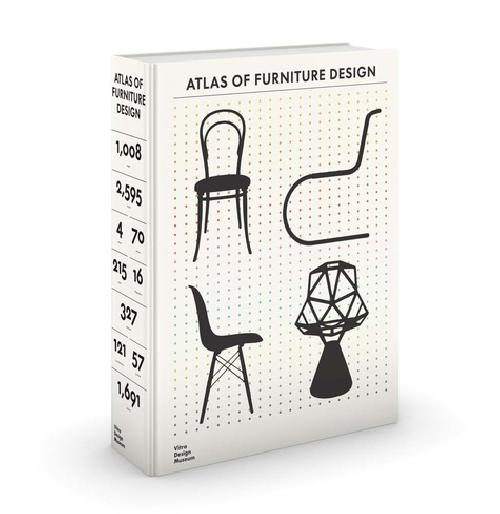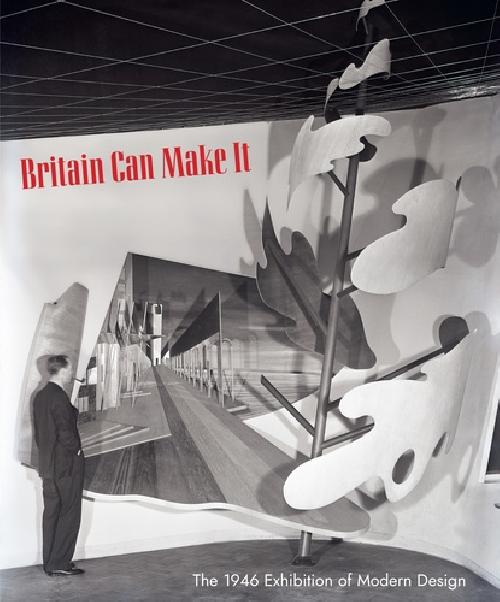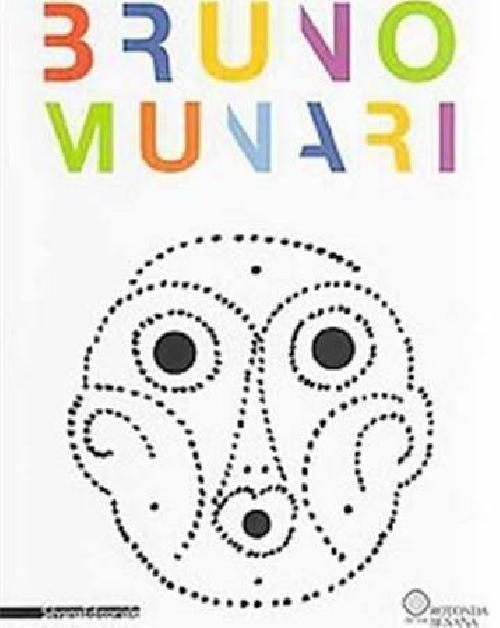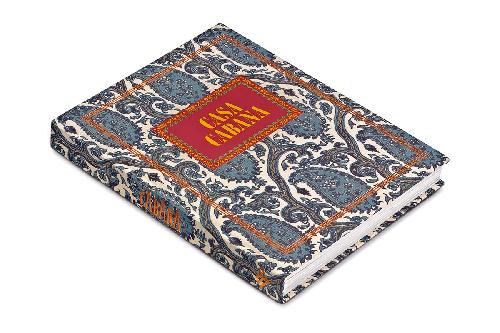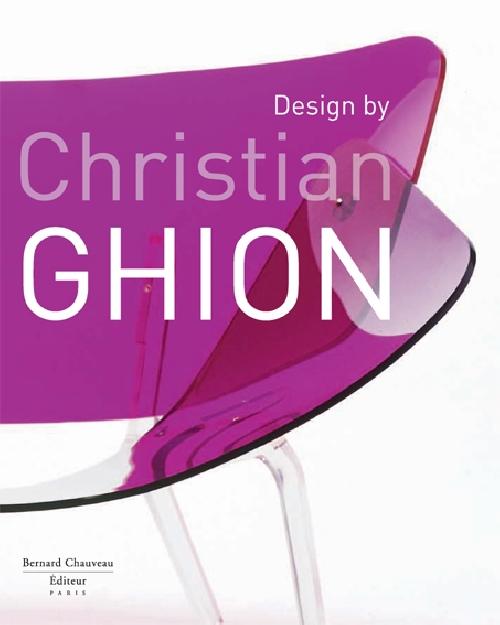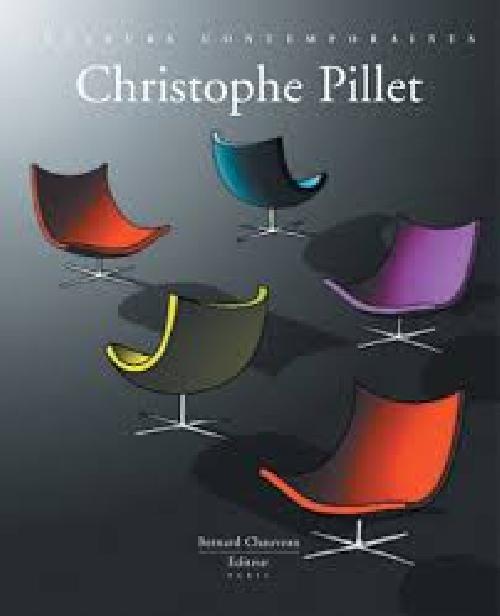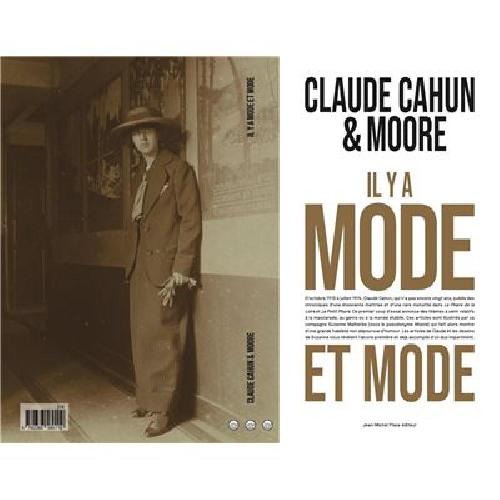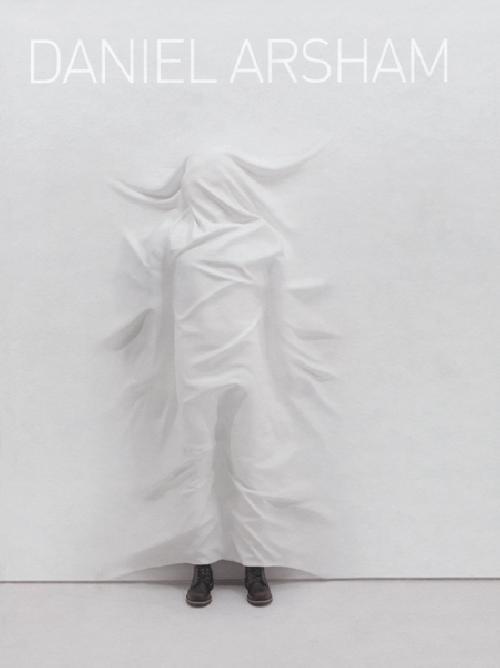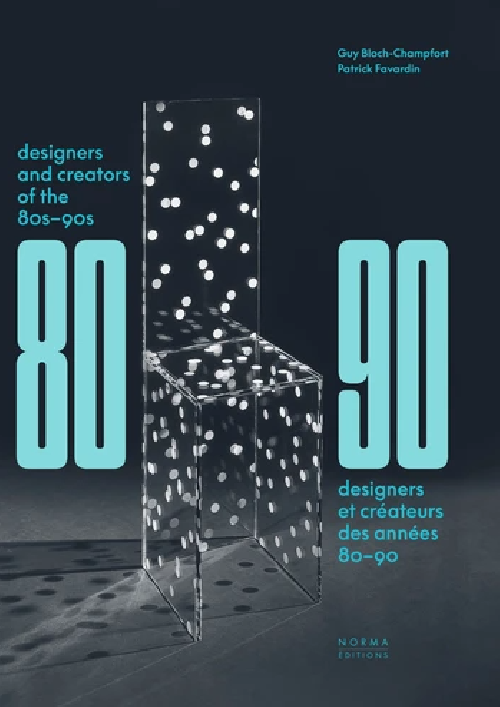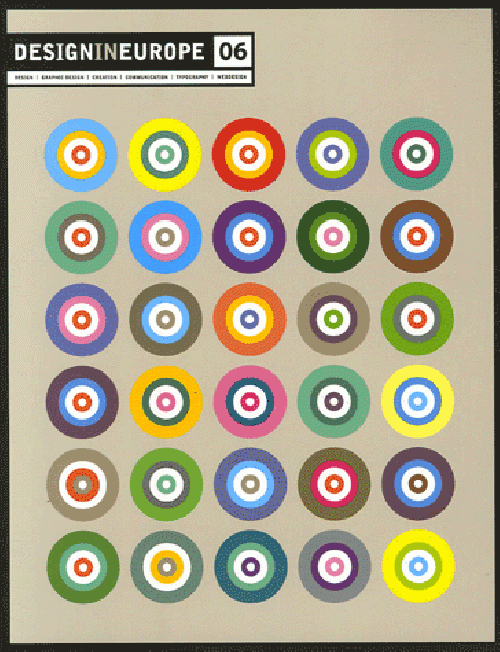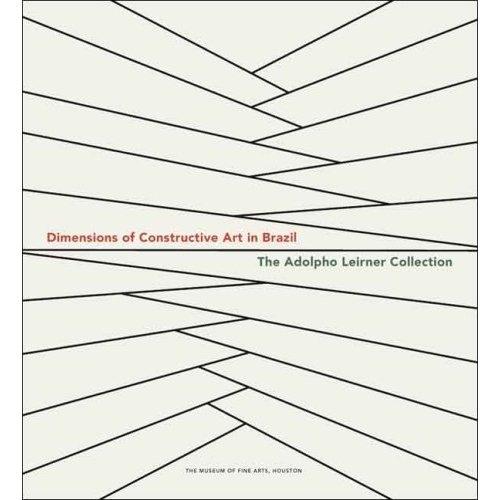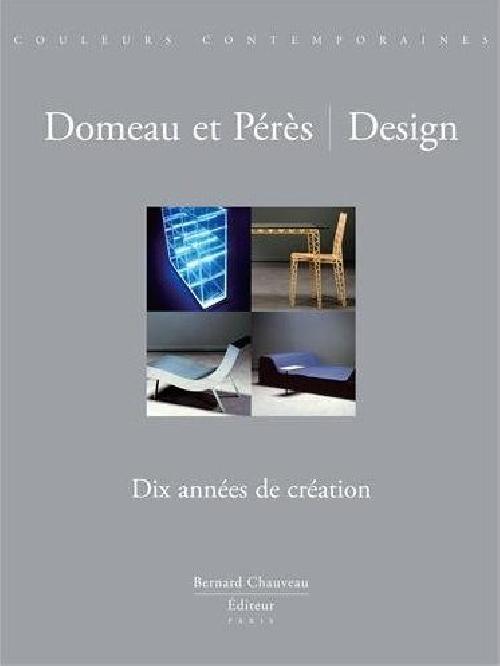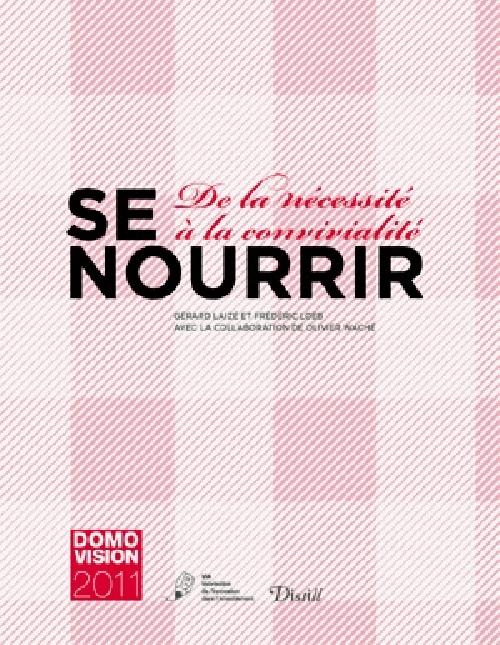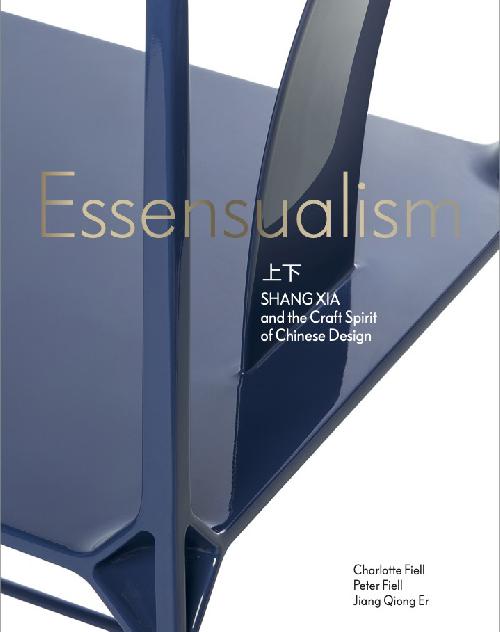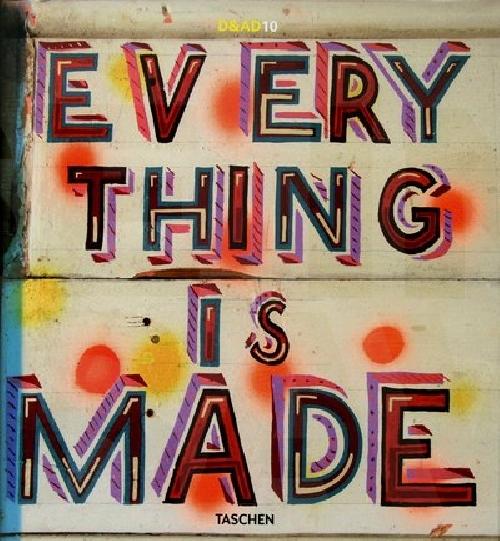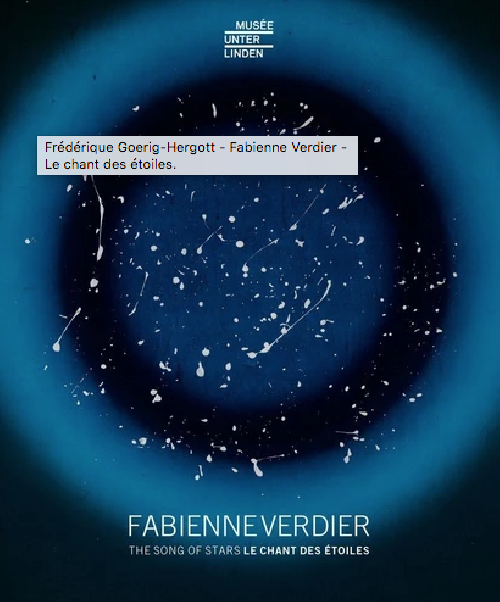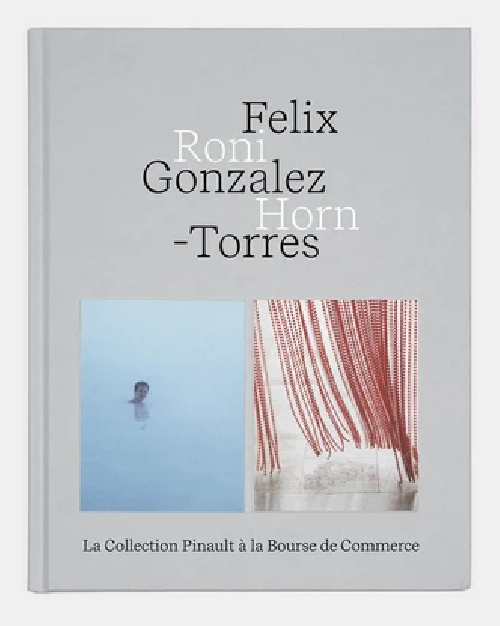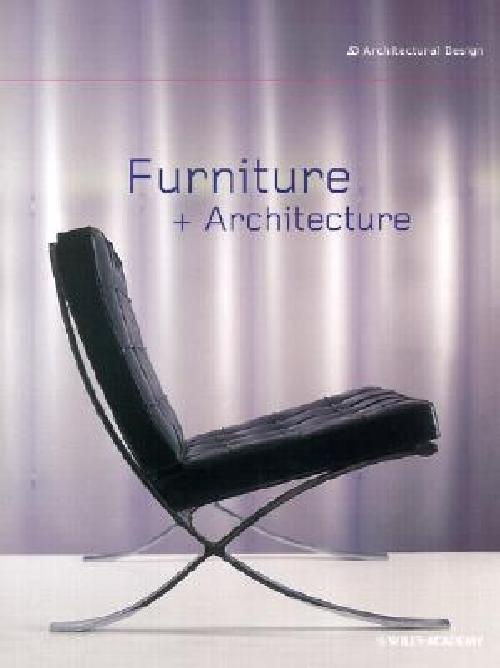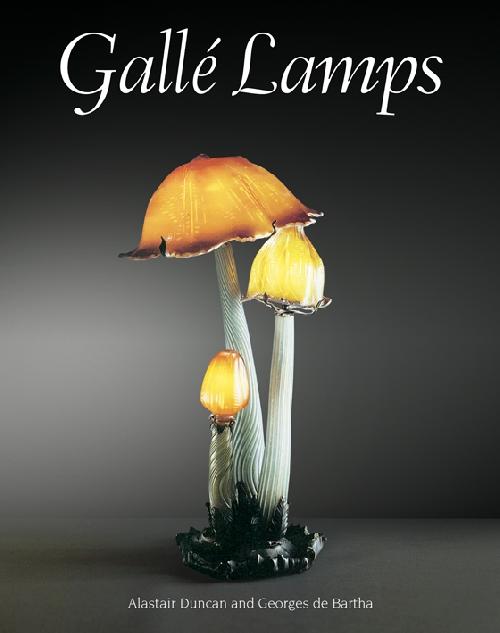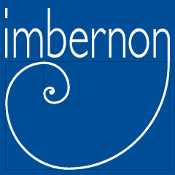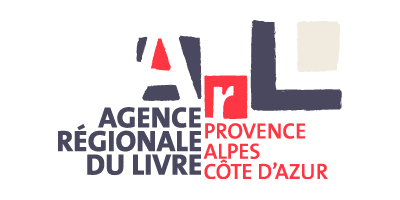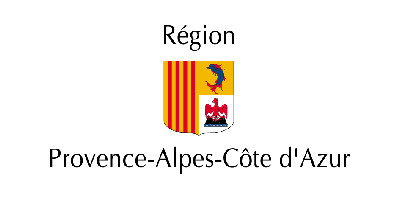Filtrer par
-
Trier par :
LES ROMANTISMES
? Administrer ? Après le néo-classicisme ? Le premier romantisme ? Le romantisme européen ? Équiper et loger ? L?orientalisme ? Les révolutions du paysage ? Les premières résistances;
RÉVOLUTIONS ET RÉACTIONS
? Éclectisme et historicisme ? Le temps des scandales ? L?impressionnisme ? Naissance de la métropole ? Après l?impressionnisme ? La réaction symboliste ? Le symbolisme international? Le rationalisme.
L?ÂGE DES AVANT-GARDES
? Les ruptures de l?art nouveau ? Le fauvisme ? Picasso et Braque ? Cubisme, futurisme et vorticisme ? L?architecture de la 2e révolution industrielle ? La Brücke, le Blaue Reiter ? L?abstraction à Paris ? La Russie. Du néo-primitivisme au suprématisme.
ORDRES ET DÉSORDRES
? Images mécaniques ? « Retour à l?ordre » en peinture ? ? L?esprit Dada ? L?abstraction ? Le surréalisme ? Avant-garde et tradition ? Le mouvement moderne ? La nouvelle monumentalité.
LA MODERNITÉ : TRIOMPHE ET CRISE
? Le logement et la ville ? L?après-guerre en Europe ? L?École de New York ? D?autres images ? Le pop ? Maturité des architectures modernes ? Les années théoriques ? L?architecture et le schisme post-moderne ? Personnalisation de la vie artistique ? Éclatement des tendances.
This volume is dedicated to the 565 Broome Street skyscraper, the first residential building conceived by Renzo Piano and designed by the Renzo Piano Building Workshop in the city of New York. Developed by Bizzi & Partners, the double tower occupies a corner space in the SoHo district, close to the Hudson River. Rich and fascinating iconography and a text by Federico Bucci and Carol Willis describe the design, the main features of the building, and how it relates to the city and the light that surrounds it in a unique way. The photographic selection is divided into thematic chapters, starting from the representation of the building s urban context and then illustrating the different parts of the project, the formal and structural characteristics of the towers, and the interiors. It also describes the contemporary artwork by Susumu Shingu that occupies the space between the towers.
The first comprehensive monograph on artist Daniel Arsham's genre-bending world.
Daniel Arsham mines lusted-after consumer goods and iconic imagery to create his conceptual objects and sculptures. The artist then casts and refinishes his work to imitate the effects of erosion and subsidence, creating monuments to our present obsessions, as if the objects were rescued from Pompeii. That same impulse toward excavation animates many of his installations, which range from layered broken walls to geodefilled caverns to melting portals. From room-collapsing environmental installations for today’s leading brands and museums to elaborate set design for classical dance, Arsham twists elements of architecture to create immersive aesthetic experiences that appeal to the divided attentions of a contemporary audience.
Presented as an induction manual to Arsham’s covetable world, the book will provide a complete overview of his practice. Virgil Abloh discusses Arsham’s contribution to a post-media artistic landscape, a thread developed by Hans Ulrich Obrist in a conversation with the artist that traces art-historical precedents. Steven Matijcio will discuss the artist’s projects and collaborations, which range from sets for Merce Cunningham’s dance company to clothes and sneakers with streetwear icons Ronnie Fieg and Adidas to projects with James Franco and Pharrell Williams and films with Mahershala Ali.
Des années 1890 jusqu'en 1910, l'Art nouveau est à l'origine d'un mouvement artistique et culturel qui connut une très grande popularité à travers toute l'Europe et aux Etats-Unis. Prenant le contre-pied des arts du XIXe siècle, il préconise le retour aux méthodes de production artisanale et le mélange des arts "nobles" (peinture, sculpture) et des arts "mineurs" (art décoratif). Les maîtres de l'Art nouveau - Van de Velde, Tiffany, Gallé, Beardsley, Horta, Klimt, Mucha entre autres -, s'inspirant de l'art japonais et des formes sinueuses et élégantes du monde végétal, représentent souvent des plantes, des fleurs ou encore des insectes et des animaux.
Ils utilisent également des matériaux modernes comme le fer, le béton et le verre. Le tout est extrêmement coloré. Dans ce climat d'innovation, l'Art nouveau jette les bases du design moderne.
At 1,028 pages, featuring 1,740 objects and spanning 237 years, this authoritative volume is without doubt the ultimate book on furniture design.
The Atlas of Furniture Design is the most comprehensive overview of the history of furniture design ever published. The book documents 1,740 objects by 546 designers and 565 manufacturers, and features more than 2,500 images, from detailed object photographs to historical documentation such as interiors, patents, brochures and reference works in art and architecture.
The basis for the Atlas of Furniture Design is the furniture collection held by the Vitra Design Museum, one of the largest of its kind in the world, with more than 7,000 works. The collection is made up of pieces from key periods in design history and by the most significant designers and manufacturers of the past 200 years, including early industrial furniture in bentwood or metal, Art Nouveau and Secessionist objects, works by such protagonists of classical modernism as Le Corbusier, Gerrit Rietveld, Charlotte Perriand and Marcel Breuer, postwar figures such as Finn Juhl, Eero Saarinen and Achille Castiglioni, and postmodern and contemporary designers like Philippe Starck, Marcel Wanders and Konstantin Grcic, as well as the estates of design legends such as Charles and Ray Eames, Verner Panton, Alexander Girard, George Nelson and others.
Several years in the making, the Atlas of Furniture Design has employed a team of 71 authors and features in-depth essays providing sociocultural and design-historical context to the history of furniture design, as well as 551 detailed texts accompanying key objects. The book is enriched by a detailed annex containing designer biographies, bibliographies, a glossary of manufacturers and an index, along with information graphics offering a complementary visual approach to the history of furniture design. The Atlas of Furniture Design is both an encyclopedic reference tool and an indispensable resource for collectors, scholars and experts, as well as a beautifully designed object that speaks to design enthusiasts around the globe.
This publication will be a highly visual celebration of the massively popular, but now largely forgotten, Britain Can Make It exhibition. Organised by the Council of Industrial Design, it was held in empty ground-floor galleries of the Victoria & Albert Museum, from September to December 1946. A ground-breaking, morale boosting exhibition, it showcased British design and manufacturing. Despite its short run, it boasted an incredible 1.
5 million visitors, and remains one of the most visited exhibitions ever held at the V&A. Long before the end of the Second World War hostilities, the government's Post War Export Trade Committee recognised the importance of promoting the country's manufacturing capabilities. Plans for an exhibition of 'National Importance' were set in place in October 1942, for an event that would illuminate the gloom of austerity, educate the public in the value of good design, and most importantly, boost much needed foreign trade.
Britain's need to promote, manufacturer and export its goods was urgent. The job of organising the exhibition was given to the Council of Industrial Design on behalf of the government's Board of Trade. From its early planning stages, there was a desire to create an exhibition that was full of colour, light and airy, and far removed from the browns and greens of the inter-war years. The exhibition was also intended to work as a public morale boosting exercise and it did, attracting visitors from around the country.
Mile-long queues constantly formed outside the V&A. Interviewed in 1984, James Gardner, the designer of the exhibition, commented on the motivation for the exhibition : 'We'd got to get British manufacturers to produce well-designed goods quickly and to cheer the British public up. They were so depressed. Give them something to look forward to. You know, this was the dream of the future, if you like'.
BCMI was not a trade show. Manufacturers had to put forward their products and only those deemed the best examples were chosen by specialist committees. An accompanying catalogue detailing the manufacturers of products (and significantly, wherever possible the names of the designers of each product), could be bought by visitors from one of the bookstalls dotted around the exhibition. The catalogue explained when goods would be available for the home and trade markets : 'Now', 'Soon' or 'Later'.
Most often they were 'Later' for the home market which led to negative comments in the press, such as : 'Britain Can't Have It', 'Britons can't buy it', and 'Britain Can't Get It'. Products representing key consumer groups, including clothing, leisure, and domestic products were displayed. These were diverse, from pottery and glass, to radios, women's and men's wear, furniture, fabrics, toys, jewellery, boilers, taps, and sporting equipment.
The Furnished Rooms section were room sets that sought to show how a range of people from different professional groups might live. By taking its structure loosely from the exhibition itself and from the accompanying Design '46 catalogue, Britain Can Make It will take the reader through an eclectic range of subject areas and consumer products. The book begins with a discussion of the political climate and economic motivations that led to this exhibition of 'National Importance' taking place, and an overview of the contemporary social context.
Additional essays will cover specific aspects of the exhibition itself, including the surrealist design of the exhibition, the art and artists involved, the naming, and the 'Design Quiz'. Most chapters will be in the form of short illustrated essays.
On the occasion of the centenary of his birth (2007), and twenty years after the last major monographic exhibition (Palazzo Reale, Milan, 1987), a great show featuring over two hundred works pays homage to this artist.
The exhibition highlights not only the most renown works, as the projects of installations of the forties and fifties, the artistic interventions in the architectural field of the following decade, the graphic projects and the cooperation of some of the most important companies of Italian culture of the period after the Second World War (Einaudi, La Rinascente, Olivetti and Danese), but also some of the less known aspects of Munari's work, as his continuative cooperation with many Italian magazines specialized in design, communication and art.
The catalogue, completed by rich iconographic material, presents the ten sections in which the exhibition is organized, and it includes as well a biography and a bibliography.
Milan, October 2007 - February 2008
Fondé en 2014 par Martina Mondadori Sartogo, le magazine bi-annuel Cabana est spécialisé dans le design intérieur, tirant son inspiration dans l´histoire de l´art italien tout en conservant un esprit bohème-chic. Après le succès d'un premier livre Cabana Anthology, ce second livre propose une nouvelle sélection des meilleurs portfolios et portraits de la revue.
Cet article est également disponible au Rupture Arts &Books, 24 rue du Vertbois, 3e arrondissement, Paris.
Une carrure impressionnante et un franc-parler qui lui est propre, Christian Ghion est un personnage hors du commun. Il est aussi un designer aux talents multiples.
Sa créativité, son inventivité sans cesse renouvelées lui ont permis de multiplier ces dernières années des collaborations avec de prestigieuses maisons d'édition (Néotu, Cappellini, Driade, Salviati, XO, Sawaya & Moroni...) et de grands noms ou personnalités internationales (Chantal Thomass, Pierre Gagnaire, Jean-Charles de Castelbajac, Nicolas Feuillatte...).
Rassembleur, il organise pendant sept ans les expositions Tarkett Sommer auxquelles participent les grandes stars du design et orchestre le « Design Lab », véritable laboratoire d'innovations, où se révèlent les signatures de demain.
Première monographie consacrée au designer, ce livre vient illustrer la trajectoire originale de Christian Ghion.
Préface et texte (français/anglais) : Pierre Doze et Barabara Poirette.
Le designer Christophe Pillet choisit de dessiner des objets, des meubles, des lieux pour raconter des histoires. Ou plus simplement pour dire les choses et donner son point de vue sur des situations du quotidien. Ce livre inédit présente un large échantillon d'archives graphiques du designer. Dessins au crayon, au feutre ou encore esquissés par informatique s'intercalent avec une série de propos où Christophe Pillet livre son approche des différents domaines d'expression qu'il explore. Véritable envers du décor, cet ouvrage est également constitué d'un portfolio photographique qui offre un regard singulier sur quelques réalisations phares du designer afin de rappeler au lecteur l'aboutissement formel de l'objet.
CHRISTOPHE PILLET (né en 1959, vit et travaille à Paris). Diplômé de l'école des Arts décoratifs de Nice en 1985 et Master de la Domus Academy de Milan en 1986 Christophe Pillet travaille de 1986 à 1988 à Milan, puis de 1988 à 1993, avec Philippe Starck à Paris. Depuis mai 1993, il poursuit son activité en tant qu'indépendant. Elu Créateur de l'année en 1994, il intervient dans de nombreux domaines tels que le design de mobilier et de produits, la décoration intérieure, l'architecture, la scénographie et la direction artistique. Christophe Pillet collabore, entre autres, avec les sociétés, Cappellini, Daum, JC Decaux, Domeau & Pérès, Driade, Lacoste, L'Oréal, Renault, Serralunga, Veuve Clicquot Ponsardin, Whirlpool.
D’octobre 1913 à juillet 1914, Claude Cahun, qui n’a pas encore vingt ans, publie des chroniques d’une étonnante maîtrise et d’une rare maturité dans Le Phare de la Loire et Le Petit Phare. Ce premier coup d’essai dans la presse nantaise annonce des thèmes à venir relatifs à la mascarade, au genre ou à la natalité. Ces articles sont tous illustrés par sa compagne Suzanne Malherbe (sous le pseudonyme Moore) qui fait alors montre dans ses dessins d’une grande rigueur non dépourvue d’humour. Reproduits en fac-similé, les articles de Claude et les dessins de Suzanne nous révèlent l’œuvre première et déjà accomplie d’un duo virevoltant.
Claude Cahun (1894-1952) née Lucy Schwob et nièce de Marcel Schwob, a pu déclarer : « J’ai la manie de l’exception ». Elle était en fait plusieurs exceptions à la fois : poète, photographe, comédienne, traductrice, essayiste et activiste révolutionnaire. Elle est devenue depuis deux décennies une véritable icône du féminisme mondial.
Miami artist Daniel Arsham (born 1980) toys with our notions of what to expect from various materials and media, transcending the strict boundaries between art, architecture and performance. In so doing, he explores what is natural, what is fabricated, what has come about by chance and what is planned. His gouaches, sculptures and conceptual objects often mimic effects of subsidence, erosion or melting. Arsham graduated from Cooper Union, and received the Gelman Trust Fellowship in 2003. His work has been shown at institutions such as MoMA PS1, New York, and The Museum of Contemporary Art, North Miami, Florida, among many others, and he has collaborated with the Merce Cunningham Dance Company. This book is the only comprehensive monograph of his work available. It features three interviews with the artist and many images from gallery and museum shows and performances.
Featured image, "Draped Figure" (2011), is reproduced from Daniel Arsham.
4e ouvrage thématique de la collection Décorateurs présentant près de 40 décorateurs des années 80, précédés d'une longue introduction de Patrick Favardin.
Édition bilingue (anglais-français)
Edition annuelle, DesignInEurope est un outil de référence et d'analyses destiné aux commanditaires. Les relations entre les entreprises et les agences de design se complexifient à mesure que la mondialisation et les nouvelles technologies s'étendent. Comment se réinventer dans ce contexte fluctuant et incertain ? Mais aussi comment se démarquer dans cette création multiforme en pleine transition et en perpétuel renouvellement ? DesignInEurope 2006 répond à toutes ces interrogations à travers un corpus de textes indispensables étayés par les travaux de plus de 50 agences de design.
Text in French/English.
This beautifully illustrated book salutes the recent acquisition by The Museum of Fine Arts, Houston, of the Adolpho Leirner Collection of Brazilian Constructive Art, one of the most important and complete collections in the world devoted to modern Latin American art in the 1950s and 1960s.
Including works by Cícero Dias, Samson Flexor, Lygia Clark, and members of the Grupo Ruptura of São Paulo and the Grupo Frente of Rio de Janeiro, Leirner's renowned collection celebrates its artists as important visual architects of Brazilian Modernism.
Le livre présente le travail de collaboration de l'éditeur de meubles Domeau & Pérès depuis une dizaine d'années avec des designers tels que Christophe Pillet, les Bouroullec, Matali Crasset, Andrée Putman, Laurent Nicolas, Jerôme Olivet, Martin Szekely, Milan Vukmirovic, Alexandre de Betak, Odile Decq, Vincent Dupont-Rougier, François Azambourg.
La collection DOMOVISION est un outil de réflexion prospective et d'accompagnement marketing à l'attention de tous les professionnels de l'aménagement et de l'équipement du cadre de vie : industriels, distributeurs, designers, éditeurs et agences.
L'objectif de DOMOVISION est d'offrir à chacun d'eux un contenu et une méthodologie pour les aider à anticiper les attentes du marché, les accompagner dans l'adaptation de produits existants et dans la création de ceux de demain, avec l'ambition d'améliorer le confort et le bien-être de l'homme.
Les facteurs d'évolution sociétale à moyen et long termes.
Des fiches méthodologiques pour définir les grands courants socioculturels, les progrès acquis de la science et de la technologie, les évolutions de la pensée et des modes de vie.
Quelles stratégies faut-il adopter face aux évolutions incontournables ?
Quels enjeux pour le marché du cadre de vie ?
Se nourrir : Hier. Aujourd'hui. Et demain ?
Se nourrir est au premier rang de nos besoins. Au fil des siècles, les évolutions de la société ont fait évoluer nos comportements alimentaires.
Faire la cuisine, partager un repas, sont devenus des éléments de socialisation, de différenciation, une source de plaisir, une manière de revendiquer un état d'esprit, un mode de vie...
Au gré des progrès technologiques et des métissages culturels, la cuisine a donné naissance à de multiples formes d'alimentation et a aussi considérablement influencé nos attitudes et la structure de notre habitat.
DOMOVISION 2011 permet de décrypter l'évolution de l'activité « Se Nourrir », de traduire son influence sur notre cadre de vie et d'explorer des voies prospectives.
Photographie des courants de créations actuels
13 planches de tendances analysent et proposent une expression des phénomènes contemporains qui influenceront notre vie à court terme.
Essensualism – Shang Xia and The Craft Spirit of Contemporary Chinese Design
Charlotte & Peter Fiell
Laurence King / Quercus
Extract:
"Jiang Qiong Er is one of those rare design visionaries who can see far beyond the here and now, but also happens to be very much practically grounded in the present....Through her establishment of Shang Xia, Jiang is pioneering a fascinating new approach to design, which can perhaps be best described as ‘Essensualism’. Marrying aesthetic refinement with an innate sensualism, Essensualism – as the name suggests – is all about distilling objects and spaces down to their most spiritually and sensually connective essence. This enlightened fourth-dimensional approach to design enables the creation of exquisite objects that have a sophistication inspired by ancient antecedents and which are based on thoughtful problem-solving as well as flawlessly executed craftsmanship."
The best professional's annual in the world
Following the success of D&AD 2009, the exclusive and highly-coveted annual from TASCHEN - featuring the year's best creative work - a new volume will be available again to the public at the end of 2010. The awards panel judges over 20,000 works from design studios, advertising agencies, branding consultancies, film production and photographic agencies, digital media pioneers, and other creative firms from all over the globe. Winners receive the legendary D&AD Yellow Pencil Award - or in the case of exceptional and outstanding work, the rare Black Pencil Award.
The TASCHEN D&AD Annual is an absolute must-have reference work for anyone interested in creativity, communication, design, or advertising, with the previous volume for 2009 having been published worldwide by TASCHEN.
Ce volume se présente comme une monographie consacrée aux oeuvres de Fabienne Verdier qui seront présentées lors de l'exposition que le musée Unterlinden de Colmar dédie à l'artiste, et qui dialogueront non seulement avec les collections d'art ancien et moderne du musée, mais aussi avec l'espace architectural - conçu par Herzog & de Meuron - qui les abrite. Cet ouvrage permettra aux lecteurs d'approfondir le lien inédit que l'artiste noue entre son oeuvre monumentale et le retable d'Issenheim de Matthias Grünewald en s'inspirant du spectre chromatique et de l'aura lumineuse qui distinguent la peinture de Grünewald.
Fabienne Verdier réfléchit à la représentation de la mort non plus comme fin, mais comme trace d'énergie qui se libère pour les vivants. Ce lien entre l'homme et le cosmos, cette énergie vitale sont autant de thèmes qui justifient le titre - du livre comme de l'exposition - Le Chant des étoiles. La grande installation des Rainbows joue un rôle central dans la publication : ces 66 oeuvres inspirées par l'aura lumineuse produite par la mort d'une étoile sont conçues comme des individus dont chacun porte un titre soulignant son lien avec le ciel, les étoiles et la lumière.
En outre, pour Fabienne Verdier, ces oeuvres constituent les portraits des défunts morts de la Covid-19, ils sont une manière d'icônes contemporaines et donnent vie à une oeuvre d'art universel.
En 1990, Felix Gonzalez-Torres découvre l'exposition personnelle de Roni Horn au MOCA (Los Angeles), et plus particulièrement Gold Field (1982), une oeuvre aujourd'hui mythique ? : un tapis rectangulaire, posé au sol, réalisé avec des feuilles d'or. Profondément marqué par la simplicité, la force et la beauté de cette oeuvre, Felix Gonzalez-Torres rencontre finalement Roni Horn en 1993 et partage avec elle l'impact bouleversant que son oeuvre a produit sur lui.
Quelques jours après cette rencontre, elle lui envoie un carré d'or comme signe d'amitié naissante. En réponse, Felix Gonzalez-Torres réalise Untitled (Placebo-Landscape-for Roni) (1993), un déversement de bonbons emballés dans du cellophane doré qui sont pour lui "? un nouveau paysage, un horizon possible, un lieu de repos et de beauté absolue. ? " A son tour, Roni Horn répond avec Gold Mats, Paired - for Ross and Felix (1994-1995), deux feuilles d'or placées l'une au-dessus de l'autre.
Leur amitié est scellée. Dans la continuité de cet échange créatif, nourri pendant plusieurs années et brutalement suspendu avec la mort de Felix Gonzalez-Torres, l'exposition de la Bourse de Commerce est rendue possible grâce à l'implication et à la complicité exceptionnelles de Roni Horn. Entre installations, photographies et sculptures, le dialogue des deux artistes se perpétue à travers une série d'oeuvres à la beauté fragile et à l'extrême puissance émotionnelle, tout en miroir et en lumière, avec la conviction que "? l'acte de regarder chacun de ces objets est transfiguré par le genre, la race, la classe social et la sexualité? " (Felix Gonzalez-Torres).
Au coeur de leur travail, et dans cette exposition en particulier, il s'agit donc de saisir le caractère "? intermédiaire ? " de l'existence, la dimension d'entre-deux, prise dans cette tension entre présence fragile et irréductible disparition. Le dialogue entre les oeuvres de Roni Horn et de Felix Gonzalez-Torres s'ancre dans le balancement entre ces deux polarités, entre vie et mort, entre le public et le privé, le personnel et le social, "? entre la peur de la perte et la joie d'aimer, de croître, de changer, de devenir toujours plus...
? " (Felix Gonzalez-Torres interviewé par Tim Rollins, in Felix Gonzalez-Torres, New York, A. R. T. Press, 1993).
Furniture and Architecture takes a unique look at the relationship between architects and furniture design. Focusing not only on classic mid-20th-century design i.e. Eames, Mies, Le Corbusier and Gropius, it also provides a unique insight into who will produce the next generation of classics by asking an international-array of established designers to give their tips for the top young architect-designers.
In additional it includes exclusive interviews with high-profile architects as well as with key figures in furniture manufacture and retail. A directory of specialist retailers, who sell architect-designed furniture, makes this an invaluable resource for architects and the interested public.
The book includes comprehensive articles and images of popular modernist architects such as Erno Goldfinger, Arne Jacobsen and Eero Saarinen. It also features interviews with architects Alvaro Siza, David Adjaye and Selfridges director Vittore Radice. Lavishly illustrated with many full-colour images. Contains a directory of specialist retailers selling architect-designed furniture
A comprehensive survey of the glass lamps designed by a towering figure of the Art Nouveau era
Although renowned for his work as a verrier, lamps did not form a significant part of Gallé's repertoire in glass until immediately prior to 1900. Indeed, only in the last few years of his life does it appear that he realised the full aesthetic potential of opalescent glass viewed by transmitted light.
In an Art Nouveau context, Gallé's creations reached their apogee between 1900 and his death in 1904, a brief period during which he adapted the shape of much of his glassware to its theme. Vases decorated with lilies became lily-shaped in a marriage of form and function. Fully-ripened gourds pendent on their vines glowed from within at the touch of a switch. Mushroom lamps brought the concept to full embodiment in the metamorphosis of the giant fungi into light fixtures.
This comprehensive volume catalogues the full range of light fixtures produced by the Gallé cristallerie, from those made during his lifetime to those manufactured for more than twenty-five years after his death. Including table, bedside, hanging and wall models, Gallé Lamps reveals the extraordinary variety of thematic shade-and-base combinations introduced by the firm: butterflies, moths, dragonflies, swallows and eagles hover, flutter, glide or swoop over flora and mountain vistas in a seemingly endless interplay of Nature's decorative motifs.
This volume is a companion to Gallé Furniture ISBN 9781851496624.



